

Running ‘aMOOC’? Developing and teaching ‘E-learning and Digital Cultures’. by Jeremy Knox on Prezi. Interview: Hamish MacLeod (University of Edinburgh) Crowd Media: A Web Design and Social Media Marketing Agency based in Guernsey. Innovative leaps in technology are constantly fed to us; as we sit comfortably with the latest efficiency that makes our lives easier, another emerges and once again completely changes our mindset.
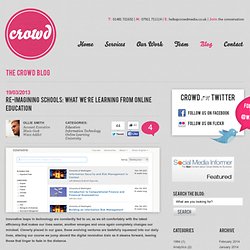
Cleverly placed in our gaze, these evolving ventures are tastefully squeezed into our daily lives, altering our course we jump aboard the digital revolution train as it steams forward, leaving those that linger to fade in the distance. Over the last decade online education has been a hot topic amongst innovators, and those whispers have gotten louder as the number of elite universities experimenting with online delivery methods rapidly grows. Free courses worldwide often experience 6 figure attendance numbers via their virtual ‘classrooms’. The game changer in this developing world of digital resources was that I had a choice, and every step I took could be purposefully applied to my working life or interests.
Learning Creative Learning Week 5: Open Learning - The Good and Bad. Getting help when you are stuck is a crucial element of learning.

Questions & answers represent a micro teach & learn exchange. And online Q&A communities provide new ways of reaching much larger communities of potential co-learners and mentors. How to Build A Strong Online Classroom Community in a MOOC (A Beginning) #edcmooc. Tag: #edcmooc MOOCs (Massive Open Online Courses) have recently exploded on the Internet.
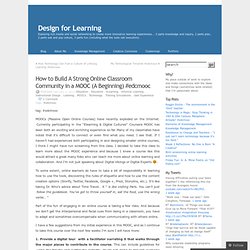
Currently participating in the “Elearning & Digital Cultures” Coursera MOOC has been both an exciting and enriching experience so far. Many of my classmates have noted that it’s difficult to connect or even find what you need. Do teaching models in higher education need reinventing? – live chat. Michael Barber, chief education adviser of the world's largest education firm, Pearson, has been reported saying middle-ranking UK universities could face extinction within the next 10 years if they don't find a way to "mark themselves out of the crowd".

He said the traditional lecture model is outdated and remarked it was pointless for 100 universities to develop the same courses when "the best professors are making their course available for free". If it's not just universities that face extinction, but university lectures too, is it time to rethink the way academics teach in universities? How do lecturers now see their role in higher education? And what do they think is the teaching model of the future? We've already seen a major shift in the landscape with the creation of Massive Open Online Courses (MOOCs) both overseas – Coursera, Udacity and edX – and in the UK – FutureLearn – providing thousands of free online courses for anyone, anywhere, with an internet connection. How MOOCs Could Meet the Challenge of Providing a Global Education.
As online education platforms like Coursera, edX, and Udacity burst onto the scene over the past year, backers have talked up their potential to democratize higher education in the countries that have had the least access (see “The Most Important Education Technology in 200 Years”).
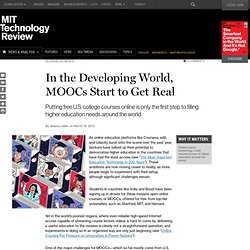
These ambitions are now moving closer to reality, as more people begin to experiment with their setup, although significant challenges remain. Students in countries like India and Brazil have been signing up in droves for these massive open online courses, or MOOCs, offered for free from top-tier universities, such as Stanford, MIT, and Harvard. One of the major challenges for MOOCs—which so far mostly come from U.S. universities—is to tailor the content of courses to a diverse worldwide audience with any number of combinations of language, educational, motivational, and cultural backgrounds. Taking a look at MOOCs. Letters: Limits of moocs. The Real Winners of the Coming Revolution in Higher Education.
Online Learning: a Manifesto. 50 Education Technology Tools Every Teacher Should Know About. Technology and education are pretty intertwined these days and nearly every teacher has a few favorite tech tools that make doing his or her job and connecting with students a little bit easier and more fun for all involved. Yet as with anything related to technology, new tools are hitting the market constantly and older ones rising to prominence, broadening their scope, or just adding new features that make them better matches for education, which can make it hard to keep up with the newest and most useful tools even for the most tech-savvy teachers.
Here, we’ve compiled a list of some of the tech tools, including some that are becoming increasingly popular and widely used, that should be part of any teacher’s tech tool arsenal this year, whether for their own personal use or as educational aids in the classroom. Social Learning These tools use the power of social media to help students learn and teachers connect. Learning Lesson Planning and Tools Useful Tools. EdTech Trends and Predictions 2013. Group work advice for MOOC providers. The most valuable aspect of MOOCs is that the large number of learners enables the formation of sub-networks based on interested, geography, language, or some other attribute that draws individuals together.

With 20 students in a class, limited options exist for forming sub-networks. When you have 5,000 students, new configurations are possible. The “new pedagogical models” (A Silicon Valley term meaning: we didn’t read the literature and still don’t realize that these findings are two, three, or more decades old) being discovered by MOOC providers supports what most academics and experienced teachers know about learning: it’s a social, active, and participatory process. The 6 Biggest Challenges Of Using Education Technology. In an unplanned series of sorts, we’re showcasing a couple of posts about the 2013 NMC/EDUCAUSE Learning Initiative Horizon Report for Higher Education . We’ve already talked about the key trends in the report , but it also addressed another important topic when it comes to classroom technology – the challenges involved with implementing new technologies.
The Horizon Report identified six broad challenges to implementation which span the widest range of users – while recognizing that there are many significant local barriers that present their own challenges as well. What is a MOOC? What are the different types of MOOC? xMOOCs and cMOOCs. The acronym “MOOC” has been in vogue recently, with lots of discussion about organisations like udacity, coursera and edX.

A break with tradition. What are the value of MOOCs?
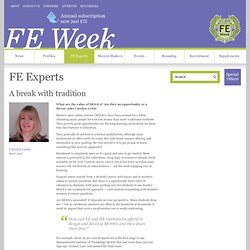
Are they an opportunity or a threat, asks Carolyn Lewis Massive open online courses (MOOCs) have been around for a while, educating many people for a lot less money than more traditional methods. They provide great opportunities for life-long learning, particularly for those who face barriers to education. They generally do not lead to a formal qualification, although some institutions do offer credit by exam. Call for Submissions - MOOCs and Beyond: eLearning Papers Issue 33.
A Tale of Two MOOCs @ Coursera: Divided by Pedagogy. The Web as a classroom is transforming how people learn, is driving the need for new pedagogy; two recently launched courses at Coursera highlight what happens when pedagogical methods fail to adapt.
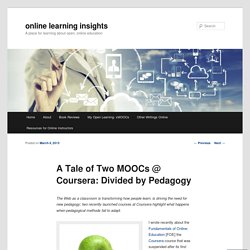
Glogster - Online Multi-media Posters, My Voki - Create T... NETS S - National Educational Technology Standards for St... NETS S - National Educational Technology Standards for Students.www.iste.org An essential question is the starting point, the point of inquiry in which students are engaged in real world explorations that are meaningful and have purpose.Responses to Essential Questions cannot be found, they must be developed from research, experimentation, investigation, and practical experience.
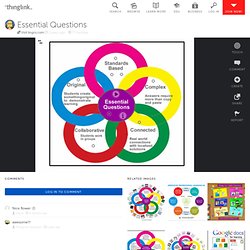
Answers to these types of questions require students to construct knowledge and sufficient time must be devoted to providing students with opportunities to develop those answers.daretodifferentiate.wikispaces.com Essential questions require students to connect the learning to the world they live in today. TAGS Searchable Twitter Archive. EDCMOOC. Present tense “We want the community to understand why it’s important to study the brain and to study the brilliance of other animals … so that they can tell us how their brains do it, so that we can then make hypotheses about how the human brain does it.” Sarah Woolley, researcher Utopian Potential. Will Moocs fail to give students help they need? 50+Ways - home. EDCMOOC by Heikki Hallantie. Humanizing Online Learning with VoiceThread. EDCMOOC - My Digital Artefact: The Human Revolution. Designed for Learning!
Saturday, February 23, 2013 EDCMOOC - My Digital Artefact: The Human Revolution For the last 4 weeks, I was immersed in an online course titled "Elearning and Digital Cultures" #edcmooc .With more than 40,000 students from all over the globe and 5 amazing professors from the University of Edinburgh,(Jeremy Knox, Siân Bayne, Hamish Macleod, Jen Ross and Christine Sinclair) it was indeed a massive online learning movement! Professor Leaves a MOOC in Mid-Course in Dispute Over Teaching - Wired Campus. Students regularly drop out of massive open online courses before they come to term. For a professor to drop out is less common. Subscription TLT Group. The use of music and animation in eLearning. Teaching 'E-learning and Digital Cultures' Connected learning: getting beyond technological determinism. Web Tools for Teachers by Type. Digital Artifact Tools. Paul's E-Learning Resources. Why Informal Learning is Crowding Out Formal Learning.
Untitled. Elearn.background. Netcococo.png (952×442) An Ed-Tech Guide for Teachers and Technologists. “Ed-Tech” stands for educational technology, it is about the education-focused technologies or using general technologies for education purposes. "Communication leads to community, that is, to understanding, intimacy and mutual valuing." — Rollo May. A Teacher's Guide to Social Media. TEDx Warwick. 64 Sites for Digital Storytelling Tools and Information. 50+Ways - StoryTools. Poverty, technology, and the future of global education. Educational Technology for the Classroom from Mimio. Responding to Online Students - How Do We Tell Them They've Made a Mistake?